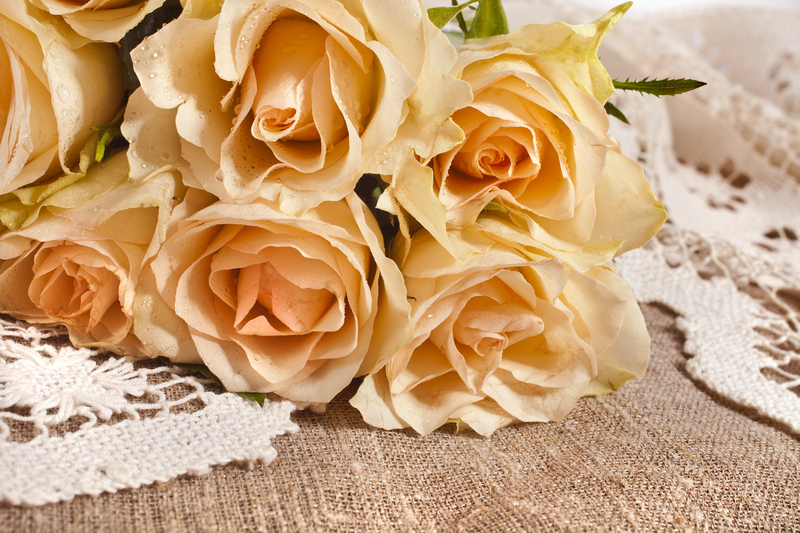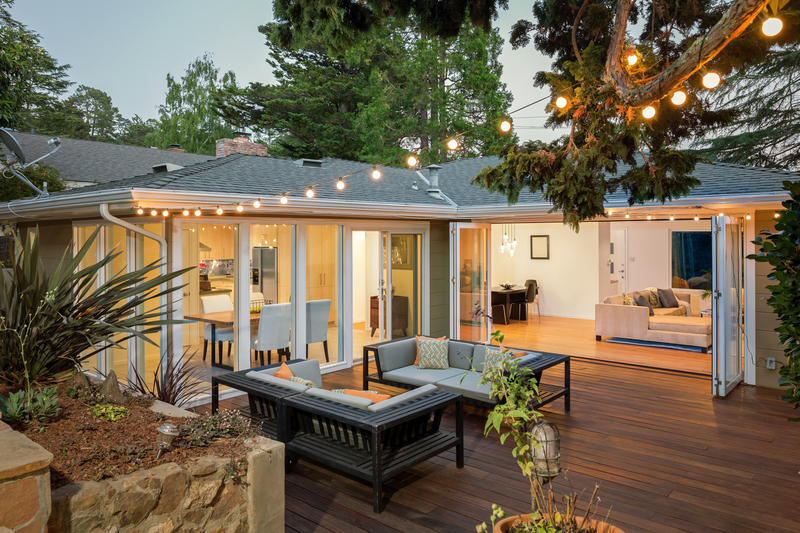Essential Garden Safety Tips for Dog Owners
Posted on 18/09/2025
Essential Garden Safety Tips for Dog Owners
For many pet owners, the garden is a cherished retreat for both people and their canine companions. However, ensuring your outdoor space is safe for your dog requires careful consideration and planning. This comprehensive guide covers all the essential garden safety tips for dog owners, helping you create a secure and happy environment for your furry friend. If you want your garden to be a safe haven rather than a hidden hazard, read on for expert advice, practical solutions, and actionable recommendations.
Why Garden Safety is Crucial for Dogs
Dogs are naturally curious creatures. They love to sniff, dig, chew, and explore every nook and cranny of your backyard. However, this adventurous spirit can sometimes lead them into danger--whether it's ingesting toxic plants, getting tangled in garden netting, or finding escape routes through weak fencing.
- Exposure to poisons: Many common garden plants and substances are toxic to dogs if ingested.
- Physical hazards: Tools, sharp objects, and unsteady surfaces can injure active pups.
- Escaping: Poorly secured gardens can allow dogs to wander off, leading to injury or loss.
- Weather risks: Gardens can become dangerously hot or cold, affecting your pet's health.
This article will share vital garden safety tips for pet owners that every dog lover should incorporate into their outdoor spaces.

Common Hazards Found in Gardens
Before making your garden dog-friendly, it's important to identify the most common hazards:
- Toxic plants: Certain flowers, bulbs, and shrubs can be poisonous if chewed by dogs.
- Chemicals and fertilizers: Pesticides, slug pellets, and lawn feeds can cause serious illness if ingested.
- Sharp tools and gardening equipment: Tools left lying around can cause cuts or other injuries.
- Ponds and water features: Open water poses a drowning risk, especially to puppies or small breeds.
- Unstable boundaries: Gaps in fences and loose gates provide easy escape routes.
- Compost and mulch piles: These may contain substances (like mold or cocoa mulch) that are harmful to dogs.
- Wildlife: Some wild creatures like frogs, insects, or snakes can threaten a dog's health.
Toxic Plants to Avoid in Your Dog-Friendly Garden
One of the most critical garden safety tips for dog owners is to ensure your plants are safe for pets. Here are some plants commonly found in gardens that are toxic to dogs:
- Oleander
- Foxglove
- Daffodils and tulips (especially the bulbs)
- Azalea and rhododendron
- Lily of the Valley
- Yew
- Hydrangea
- Rhubarb leaves
- Tomato plants (greens and stems)
- Castor bean
For a full list, check with your local veterinary clinic or refer to comprehensive lists provided by animal welfare organizations such as the ASPCA or the PDSA.
Safe Plant Alternatives
- Sunflowers
- Marigolds
- Snapdragons
- Camellias
- Roses
By choosing non-toxic plants, you reduce the risk of accidental poisoning and allow your dog to roam more freely in your garden oasis.
Choosing Dog-Safe Garden Products
Gardening often requires chemicals for weed and pest control, but not all are safe for pets. Dog owners should always use non-toxic, pet-friendly products.
- Avoid slug pellets containing metaldehyde. Choose ferric phosphate-based varieties instead.
- Opt for organic, pet-safe fertilizers (such as seaweed or compost-based products).
- Store chemicals securely--out of reach from inquisitive noses and paws.
- Read labels carefully and follow application instructions to avoid accidental exposure.
If your dog is exposed to any garden chemical, contact your vet immediately.
Secure Your Garden Boundaries
One of the top dog garden safety tips is to thoroughly inspect and secure all boundaries. Dogs are adept at finding gaps, broken panels, or weak points in fences and gates.
Tips for Creating a Secure Garden Fence
- Check fences regularly: Fix or replace any damaged areas promptly.
- Use dog-proof fencing: Minimum height of 4-6 feet, with no gaps at the base.
- Install gate locks: Prevent children or strangers from accidentally opening gates.
- Bury fencing: Dig the bottom of your fence at least 12 inches into the ground to prevent digging escapes.
- Consider solid panels: For dogs prone to reactive barking, solid fences reduce visual stimulus.
Your dog's safety in the garden starts with robust, escape-proof fences and secure boundaries.
Provide Shaded Areas and Fresh Water
Dogs can quickly overheat, especially during summer. Make sure they always have access to a cool, shady spot and plenty of clean drinking water outdoors.
- Install shade sails, canopies, or plant trees that offer natural cover.
- Use raised dog beds in summer to encourage airflow and reduce overheating.
- Keep multiple water bowls in shady areas and refresh them regularly, especially during hot weather.
Pro Tip:
Ice cubes in water bowls or a shallow doggy paddling pool can provide extra relief on hot days.
Dog-Proof Your Compost and Mulch
Many households have compost bins or piles for waste recycling, but these can be dangerous for dogs--whether due to mold, sharp objects, or toxic substances like coffee grounds.
- Keep compost bins securely lidded and out of your dog's reach.
- Avoid using cocoa mulch, which is extremely toxic to dogs (similar to chocolate poisoning).
- Do not add harmful foods (e.g., onions, grapes, bones) to compost piles accessible to pets.
- Check mulch types before spreading. Some, like pine needles or rubber mulches, may cause injury if ingested or walked on excessively.
Garden Tools and Storage Safety
Never underestimate a dog's ability to get into trouble with garden equipment!
- Always store tools in a locked shed or secure box after use.
- Keep hoses coiled up and out of reach.
- Never leave powered equipment unattended or plugged in with pets nearby.
- Remove sharp objects such as pruners, saws, or broken pots from areas your dog can access.
Regularly sweep and tidy your garden to avoid hidden hazards.
Ponds and Water Features: Safety First!
While water features can add tranquility to your garden, they may also pose risks--especially to puppies, small breeds, or dogs that can't swim.
- Cover ponds with heavy-duty mesh or fencing to prevent accidental falls.
- Ensure fountains and birdbaths aren't deep enough for a dog to drown.
- Supervise your dog around garden ponds, especially during playtime.
- Avoid using toxic algaecides or treatments in water features accessible to dogs.
Wildlife and Insect Hazards
Unattended gardens attract various forms of wildlife, some of which may not be safe for your pet.
- Frogs and toads: Many species secret toxins that can cause drooling, vomiting, or worse if bitten.
- Snakes: Some regions have venomous species; check local guidance for awareness and risk reduction.
- Bees and wasps: Dogs that chase or snap at flying insects risk being stung in the mouth or throat.
- Spiders and ants: Bites can cause allergic reactions or severe irritation in dogs.
Observe your dog for unusual symptoms after outdoor play and consult a vet if needed.
Practical Tips for a Dog-Friendly, Safe Garden
Beyond avoiding hazards, there are many proactive steps to make your garden a welcoming, engaging space for your dog:
- Designate a digging area: Encourage natural digging instincts in a safe, supervised spot using sandpits or mulch beds.
- Lay non-slip, paw-friendly surfaces: Grass, bark chips, or rubber matting help prevent injuries from running and playing.
- Add sensory stimulation: Use safe herbs and plants (like rosemary or lavender) for scent enrichment, or set up agility toys and tunnels.
- Rotate toys regularly: Prevent boredom by switching up outdoor dog toys and chewables.
- Install sturdy dog waste bins: Clean up regularly to keep the garden hygienic and disease-free.
- Regular health checks: Check your dog for ticks, fleas, and injuries after garden play sessions.
Training and Supervision
Training is a vital part of garden safety for dogs.
- Teach recall and boundary commands: "Leave it," "come," and "no dig" are lifesaving commands in the garden.
- Use positive reinforcement: Reward your dog for good behavior outdoors.
- Supervise when possible: Especially with puppies or new dogs unfamiliar with the space.
- Discourage unwanted behavior: Gently correct attempts to eat plants, dig in forbidden spots, or jump fences.
Seasonal Garden Safety for Dogs
The changing seasons bring different hazards and opportunities for your canine companion.
Spring and Summer
- Be mindful of heatstroke: Never leave dogs outside for prolonged periods in hot weather.
- Increase water supplies: Regularly check and refill water bowls.
- Monitor for harmful garden plants emerging with the new season.
Autumn and Winter
- Remove fallen leaves and acorns: Both can be toxic if ingested.
- Take extra care on icy or slippery surfaces to prevent injuries.
- Watch for poisonous mushrooms: Many appear in damp, cool weather and can be deadly to pets.
- Limit exposure during cold snaps: Dogs with short coats or older animals may need jackets or boots.

First Aid and Emergency Preparation
Even with the best precautions, accidents can happen. Every dog owner should have basic canine first aid knowledge and keep emergency contacts close by.
- Keep your veterinarian's number saved and visible.
- Learn basic first aid: How to manage cuts, stings, and what to do in case of poisoning.
- Have a pet first aid kit ready: Including saline, dressings, tick removers, and antihistamines (if recommended by your vet).
- Act quickly if you suspect poisoning: Bring a sample of the suspected toxin or plant when heading to the vet.
Conclusion: Enjoy a Safe, Happy Garden with Your Dog
Creating a secure, enjoyable, and stimulating dog-friendly garden requires some effort but offers endless rewards. By following the essential garden safety tips for dog owners outlined in this guide--avoiding toxic plants, securing boundaries, using safe products, and supervising your pet--you ensure that your canine companion can happily explore, play, and relax in your outdoor oasis.
Make garden safety a priority, and you'll have peace of mind knowing your best friend is protected in your green space all year round.
For more pet safety advice and garden ideas, explore our other articles or consult your local animal welfare organization. And remember--safety always comes first!

